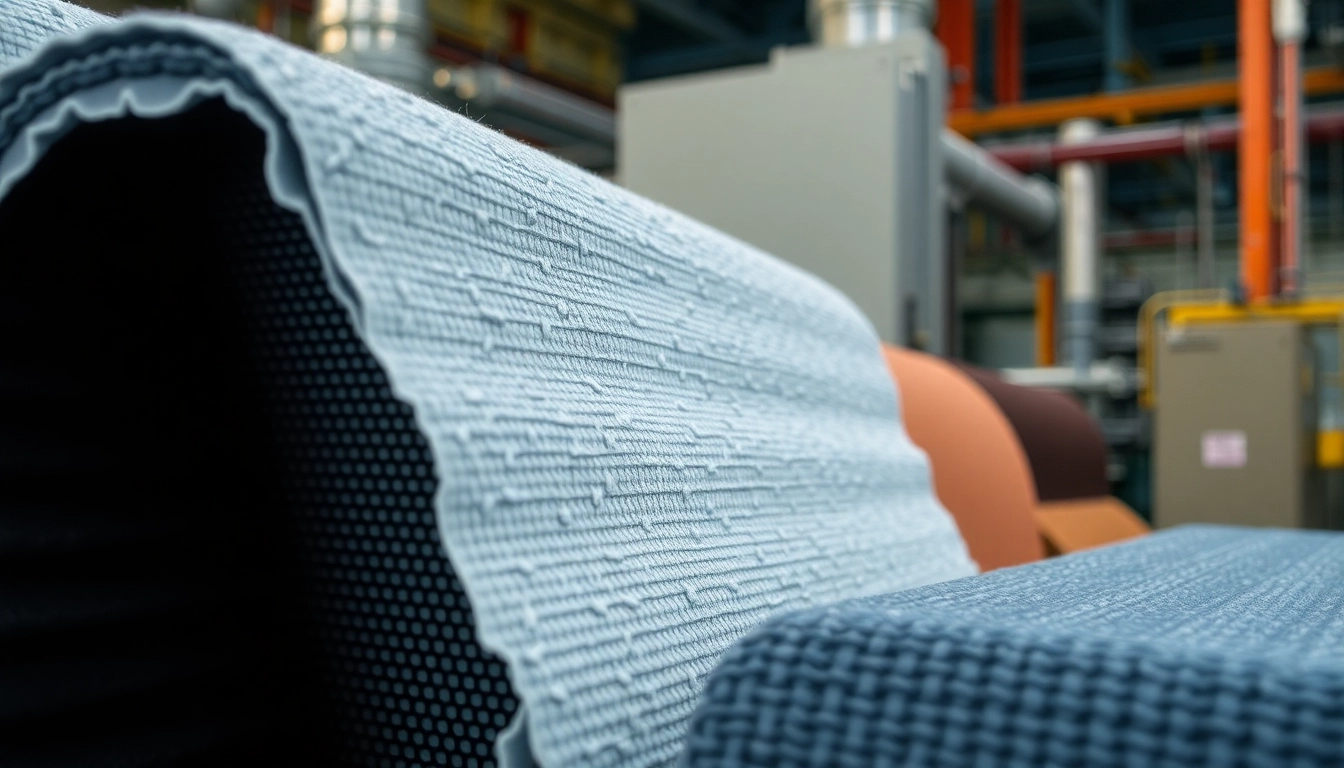Understanding Thermal Management Materials
What are Thermal Management Materials?
Thermal management materials encompass a wide variety of products specifically designed to control, dissipate, and manage heat in electronic applications. These materials play a crucial role in maintaining the performance and reliability of electronic devices, particularly as technology advances and devices become more powerful and compact. From thermal interface materials (TIMs) to phase change materials (PCMs), thermal management materials are essential in ensuring that excess heat generated by electronics is effectively transferred away from sensitive components. Specifically, thermal management materials facilitate heat dissipation, reducing thermal resistance and preventing overheating, which can lead to device failure.
Importance of Thermal Management Materials in Electronics
In today’s fast-paced technological environment, the demand for smaller, faster, and more efficient electronic devices continues to rise. The miniaturization of components coupled with increased processing power leads to significant heat generation. Effective thermal management is critical in electronics for several reasons:
- Device Longevity: Excessive heat can accelerate the aging process of electronic components, leading to premature failure. Proper thermal management extends the lifespan of devices by maintaining optimal operating temperatures.
- Performance Optimization: Many electronic components, such as CPUs and power transistors, have specific thermal thresholds. Operating within these limits ensures peak performance and operational stability.
- Safety and Reliability: Overheating can cause disastrous failures, including fires. Effective heat dissipation strategies mitigate these risks and contribute to the overall safety of electronic devices.
- Energy Efficiency: Better thermal management can lead to improved energy efficiency, as devices operate more effectively at lower temperatures, reducing overall power consumption.
Types of Thermal Management Materials
Thermal management materials can be classified into several categories based on their properties and applications:
- Thermal Interface Materials (TIMs): These materials fill the microscopic air gaps between heating surfaces, improving thermal conductivity and enhancing heat transfer. Common examples include thermal greases, pads, and adhesives.
- Phase Change Materials (PCMs): These materials absorb and release thermal energy during phase transitions, effectively stabilizing temperature fluctuations in electronic assemblies.
- Gap Fillers: Used to fill spaces between components and ensure effective thermal conduction, gap fillers are often silicone-based or polymer composites.
- Thermal Tapes: These adhesive-backed materials are ideal for mounting heat sinks and other thermal devices, providing an efficient means of heat conduction.
- Heat Spreaders: Typically made of thermally conductive metals like aluminum or copper, heat spreaders distribute heat away from hot spots to broader areas to facilitate cooling.
Properties of Effective Thermal Management Materials
Thermal Conductivity and Performance Metrics
One of the most important characteristics of thermal management materials is thermal conductivity, which quantifies a material’s ability to conduct heat. Materials with high thermal conductivity allow for better heat dissipation, enhancing the performance and longevity of electronic components. The following metrics are crucial when evaluating thermal conductivity:
- Thermal Conductivity (W/mK): A critical number indicating the material’s efficiency in conducting heat.
- Operating Temperature Range: Effective materials must maintain their properties within the operating temperature range of the electronic devices they support.
- Thermal Resistance (°C/W): This measures how effectively a material can resist heat flow, with lower values indicating better thermal performance.
Compatibility with Electronic Components
Compatibility is another essential factor to consider when selecting thermal management materials. Various electronic components are constructed from different materials, which can influence thermal interface properties. Important considerations include:
- Chemical Compatibility: Ensuring that thermal management materials don’t degrade or interact adversely with the substances used in electronic components.
- Mechanical Properties: Select materials that can handle the mechanical stress of the assembly process without compromising performance.
- Thermal Expansion: The coefficient of thermal expansion should match closely between the thermal management materials and electronic components to avoid stress during temperature fluctuations.
Durability and Environmental Considerations
In addition to thermal performance, the durability of thermal management materials is crucial. They should remain stable over time, even under varying environmental conditions. Key factors to assess include:
- Moisture Resistance: Waterproof or moisture-resistant materials can prevent degradation in humid environments.
- UV Resistance: Materials exposed to sunlight should be UV-stable to avoid degradation over time.
- Temperature Cycling: The ability to withstand extreme temperature changes is essential for maintaining functionality in different operational scenarios.
Applications of Thermal Management Materials
Industries Utilizing Thermal Management Materials
Thermal management materials are utilized across diverse industries, each requiring specific thermal solutions tailored to their applications:
- Consumer Electronics: Smartphones, laptops, and gaming consoles require effective thermal management to enhance performance and user experience.
- Automotive: Electric and hybrid vehicles demand superior thermal management to monitor and protect sensitive battery systems and electronic control units.
- Aerospace: In this sector, robust materials are essential to handle extreme temperatures and environments encountered at high altitudes.
- Telecommunications: With the increasing use of 5G technologies, effective thermal management is vital for network infrastructure equipment.
Heat Sink and Thermal Interface Applications
Heat sinks are crucial in managing heat in various electronic devices. The synergy between heat sinks and thermal interface materials is vital for optimal thermal conduction. Applications include:
- Computer Processors: TIMs are applied between the CPU and heat sink to ensure efficient heat dissipation.
- Power Management Systems: High voltage and high current applications require reliable thermal management interfaces to prevent overheating during operation.
- LED Lighting: As LEDs age, they generate more heat, requiring proper thermal interface solutions to prolong the lifespan and performance of lighting products.
Case Studies of Successful Implementations
Consider a leading tech company that redesigned its data center cooling system using advanced thermal management materials. By integrating phase change materials alongside traditional cooling methods, they achieved:
- 30% Reduction in Energy Costs: Enhanced thermal performance allowed for a reduction in air conditioning usage, leading to significant savings.
- Increased Server Reliability: By maintaining stable operating temperatures, they extended the lifespan of critical components, reducing downtime and service interruptions.
- Improved Sustainability: Utilizing recyclable thermal materials contributed to the company’s goals of reducing its environmental footprint.
Selecting the Right Thermal Management Materials
Identifying Project Requirements
Selecting appropriate thermal management materials begins with a clear understanding of the specific project requirements. Factors to consider include:
- Application Needs: Determine the heat generation levels of components and the thermal dissipation requirements based on the application.
- Environmental Conditions: Identify conditions such as humidity, UV exposure, and temperature ranges that the materials will experience.
- Regulatory Standards: Ensure that material choices comply with industry regulations and certifications relevant to the application.
Evaluating Material Specifications
Once project requirements are established, evaluating the specifications of available thermal management materials is essential. Focus on:
- Thermal Conductivity Ratings: Compare the thermal conductivity metrics of potential materials to make informed decisions.
- Durability and Longevity: Review the longevity of the materials under expected operational stress to ensure reliability.
- Cost Vs. Performance: Weigh the benefits of higher-performance materials against budget constraints and overall project costs.
Supplier Considerations and Best Practices
Choosing the right supplier for thermal management materials can make a significant difference in project outcomes. Best practices include:
- Reputation and Experience: Opt for suppliers with a solid reputation in the industry and experience in delivering specialized thermal management solutions.
- Technical Support: Select suppliers who provide technical support and guidance in material selection and application.
- Testing and Certification: Ensure that the materials offered are rigorously tested and certified to meet relevant standards.
Future Trends in Thermal Management Materials
Emerging Technologies and Innovations
The field of thermal management materials is rapidly evolving, influenced by advancements in technology. Key emerging trends include:
- Nanomaterials: The incorporation of nano-engineering to develop materials with superior thermal conductivity properties.
- Smart Materials: Development of materials that can adapt their thermal properties based on environmental changes.
- Sustainable Solutions: Increasing emphasis on biodegradability and recycling in material selection to meet environmental goals.
Market Demand and Growth Projections
The market for thermal management materials is anticipated to grow significantly over the next decade due to rising demands in electronics and electric vehicles. Recent projections suggest that the global thermal management materials market will reach multi-billions, driven by advancements in technology and environmental regulations. The continued evolution of consumer electronics and electric vehicles will propel demand, requiring innovative thermal solutions to tackle sophisticated design challenges.
Conclusion and Industry Implications
Proper thermal management is essential to ensure the effective operation and longevity of today’s increasingly compact and powerful electronic devices. As technology progresses, thermal management materials will continue to play a critical role across various industries. Companies must invest in high-quality materials and innovations to meet rising demands for efficiency and sustainability in electronic applications. By embracing superior thermal management solutions, stakeholders can enhance device performance, ensure safety, and contribute to a more sustainable future.



